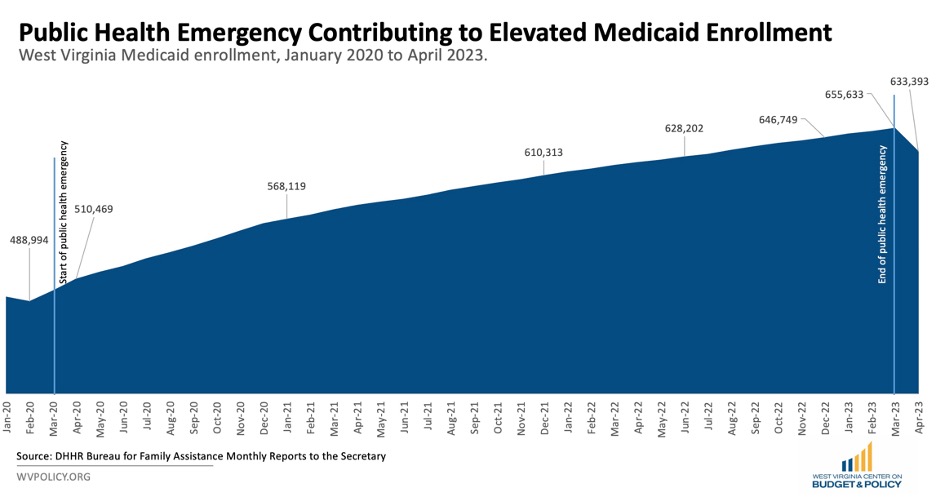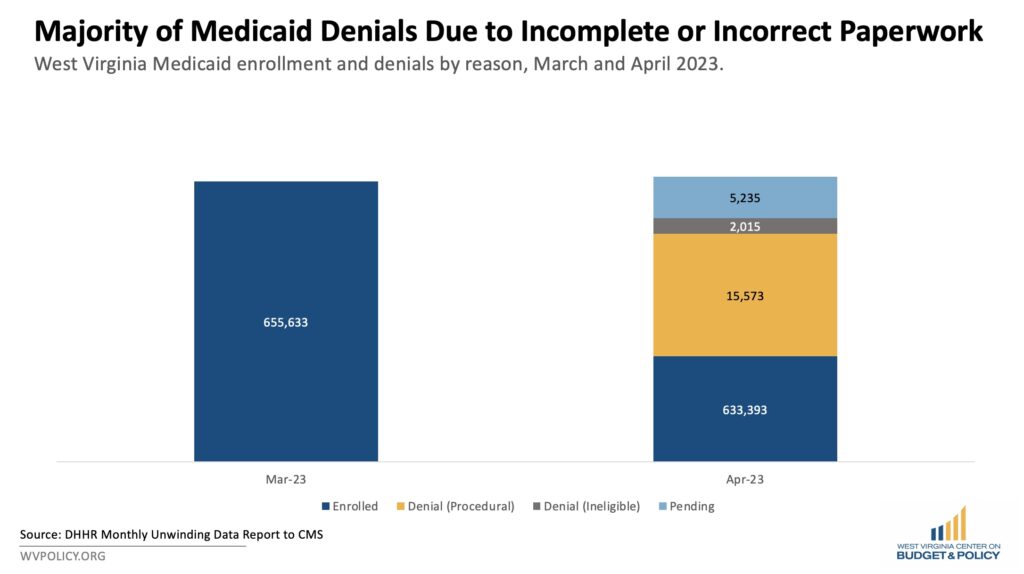West Virginia, alongside the rest of the nation, began rolling some residents off of Medicaid in April upon expiration of the three-year continuous coverage protection triggered by the COVID-19 pandemic and subsequent economic downturn. The flexibilities implemented during that time helped keep many West Virginians healthy and economically stable. And while the federally-recognized COVID-19 public health emergency has ended, there are many lessons that the period illuminated that states can learn from to ensure access to health care beyond the emergency. Over the next year, the state’s health agency will redetermine the eligibility of all Medicaid enrollees—or 655,000 West Virginians as of March 2023. While it is expected that Medicaid enrollment will decline over this period, it’s important to distinguish those who will lose coverage because they were eligible for Medicaid when they initially enrolled and are now no longer eligible from those who will lose coverage simply due to procedural denials—in other words, those who may still qualify but did not receive their renewal paperwork or had difficulty filling it out or submitting it by the requested deadline.
The extent of this eligibility redetermination undertaking is unprecedented for both Medicaid enrollees and workers, and the data collected during this time can indicate overall wellness and provide insights that can make the Mountain State a healthier, happier place to live beyond this period. The state recently released the first month of data from the renewal process.
Throughout the pandemic, Medicaid steadily grew because of the continuous coverage requirement to protect health and economic stability. In February 2020, before the pandemic, Medicaid covered roughly 489,000 people. It peaked in March 2023—the last month before the continuous coverage provisions ended—at 655,000. Experts anticipate that Medicaid will shrink to its pre-pandemic reach as the economy recovers. In the first month of renewals, roughly 22,000 West Virginia enrollees lost coverage for Medicaid (and CHIP).

In April, 48,000 West Virginians were considered for Medicaid coverage renewal, and just under 35,000 (72 percent) of them successfully renewed and will continue receiving coverage. Of the 17,500 people who terminated their benefits, 2,000 were found ineligible for Medicaid or CHIP and were referred to the Marketplace for alternative coverage. This group captures those who completed their renewal forms and are over the income threshold for the program. The remaining 15,500 denials were for procedural reasons. Procedural denials capture those who did not correctly fill out their renewal forms and supplementary materials and return them if requested on time.

While each state is tackling the Medicaid unwind slightly differently, West Virginia is not unique in the high percentage of procedural denials. Early data indicates that several states are also experiencing high ratios of procedural denials, though the reasons may differ based on local factors. In West Virginia, the high percentage of procedural denials paired with a comparatively low ex parte—or automatic—renewal rate indicates an opportunity that may help eligible families stay enrolled. Ex parte renewals review available state and federal data sources to confirm income eligibility for enrollees. This creates less paperwork for enrollees and agency employees while still providing accurate, up-to-date information.
While some people the state procedurally denied may be over the income eligibility threshold, research suggests that most folks in this category may still be within the requirements to remain covered by Medicaid. Several barriers might make correctly completing and returning paperwork on time onerous for enrollees, including having difficulty getting questions answered via phone, limited access to transportation and broadband, and avoidance due to anticipated hardship. Ex parte renewals are one of the state’s many options to work around these barriers. While the number of ex parte renewals has grown significantly in recent months, there is still room to increase impact. By utilizing every available resource, the state can reduce procedural denials and help West Virginia remain healthy.
While this is just one month of data, it indicates how the state currently serves Medicaid enrollees. The next several months of information will help establish patterns and opportunities to make the renewal process as smooth as possible. These lessons go beyond the public health emergency and can shift the long-term status quo.